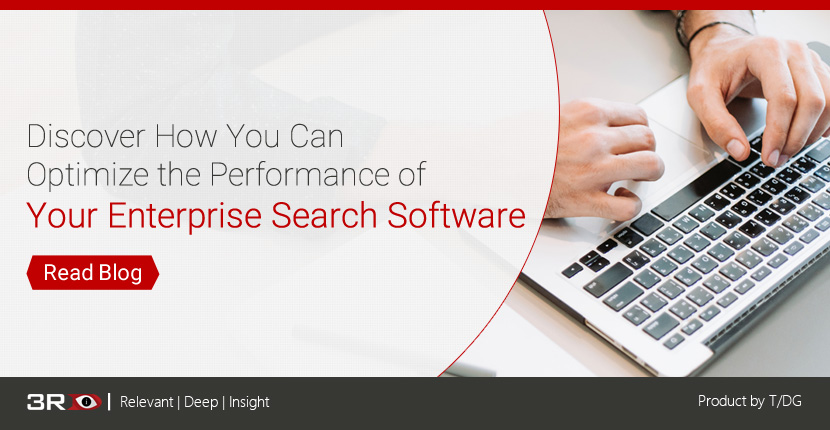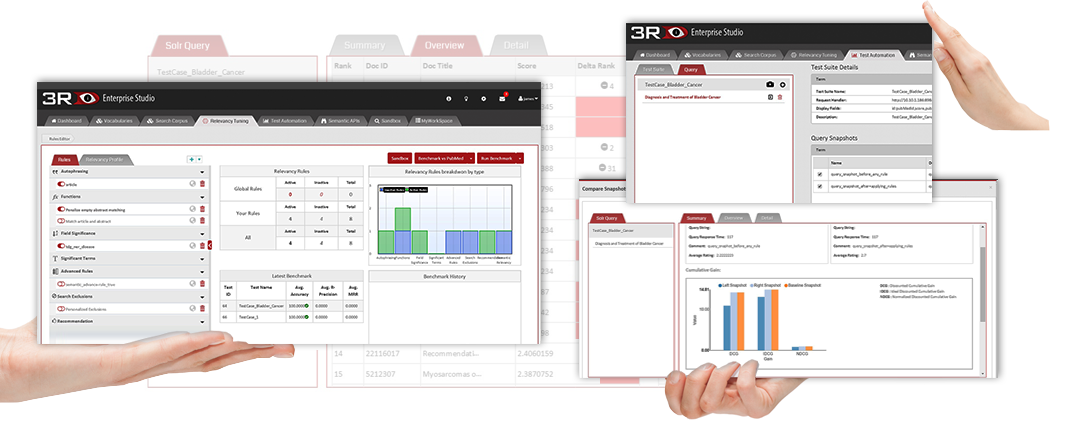
How to Make Your Enterprise Search Software Serve You Better
90% of the world's data has been created in the last two years alone.
This statistic by Forbes shows that data is growing at a faster pace than ever, so much so that Big Data has already emerged as a major challenge and enterprises all across the globe are on the lookout for the most optimum ways to manage and analyze Big Data. What adds to this challenge is the fact that a major share of this data is unstructured and cannot be easily analyzed. To deal with this enormous data, enterprises are investing in enterprise search tools. Since the traditional search approach brings little result when it comes to unstructured data, the new age enterprise search tools make use of advanced text analysis and data mining technology to make sense of the unstructured enterprise data.
3RDi Search is an example of a new age enterprise search software that is powered by semantic technology, Natural Language Processing (NLP), and Artificial Intelligence (AI), to enable advanced analysis of even the most complex enterprise data. If you explore 3RDi Search, you can get an idea of how the modern avatar of the enterprise search software is equipped with every text analysis feature one can dream of.

While every organization today wants to invest in an enterprise search software, what they should realize is that investing in the software is just the beginning – it's the first step in your journey towards the goal of providing the most relevant results to your users. What comes next is optimization and it is very important for enhanced performance of your enterprise search tool. So, let's have a look on how you can optimize your enterprise search software. Are you ready?
Enterprise search is complex because it's all about unpredictability – the type of data and its structure as well as the kind of queries that come up. This is unlike the case of database applications where the structure of the data is according to some pre-defined format. So, how do we approach this issue in order to make more sense of the chaos?
Well, to begin with, you must test your enterprise search software as much as possible. It's important to note that search solutions that enterprises use today are powered by AI and machine learning, both of these technologies "learn" with practice. So, the more you use the platform, searching for queries that your users are most likely to look for, the easier it will be for the software platform to understand the behavior of your target users and you’ll slowly see an improvement in the relevancy of results that show up, as it gets better and better.

Source: https://bit.ly/32F8AKi
Moving on to the next point, do you have an idea about the top search queries in your domain? If not, it's time you did some research to figure it out. The top search queries are those queries which most users search for – these are the terms your search engine gets to analyze most often. Once you have a list of the "top 100" queries, you need to work on them to ensure each one of these queries fetch the best results. Once you have the top 100 sorted, you can take up the next hundred queries, and so on. The objective here is to enter these top queries into your search engine as a user would, and look for the results that show up. This will ensure most of your users get the best results most of the time. After all, that's the ultimate goal, isn't it? While you’re at this, you are likely to come across queries that show up no results. You can take care of these by adding some synonyms to your search engine vocabulary.
The approach to optimizing the text analysis capabilities of your enterprise search tool is simple, but surprisingly enough, not many organizations out there are doing it right. This is the reason many enterprises are even complaining that the search tools they are using are not good enough to meet their requirements. However, before coming to this conclusion and considering replacing the enterprise search software, one must understand the new age enterprise search platform has indeed come a long way. The tools we have today have all it takes to provide us with the results we need. All we need to do is take a few small steps towards optimization, because every domain is different and we must give the software a chance to "understand" our domain. And yes, if we do it right, we can rest assured that our users will be happy and satisfied with the performance of the software.